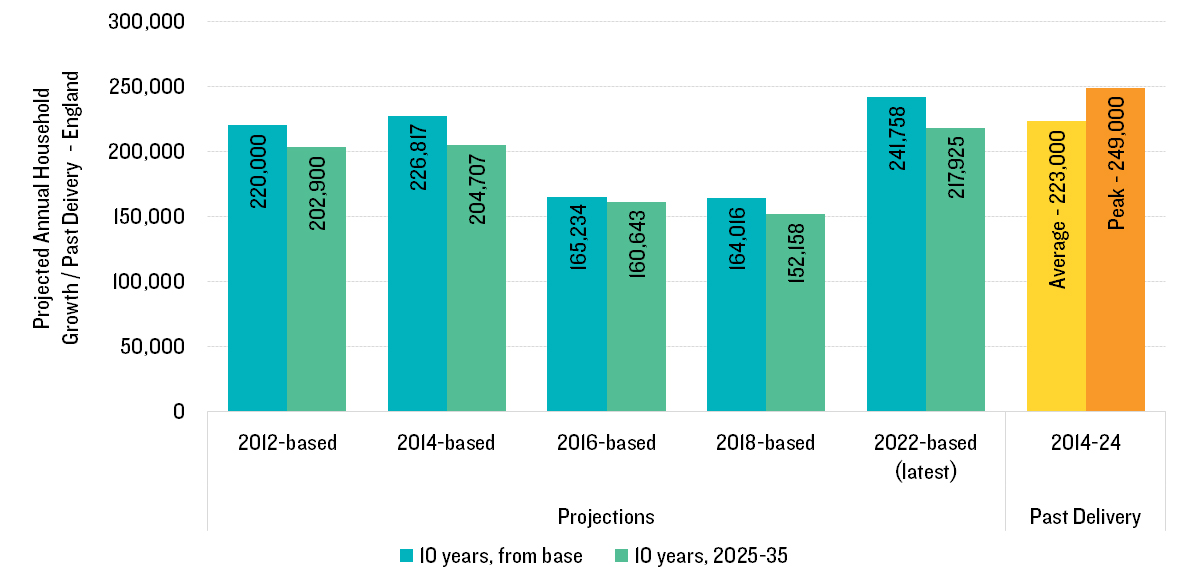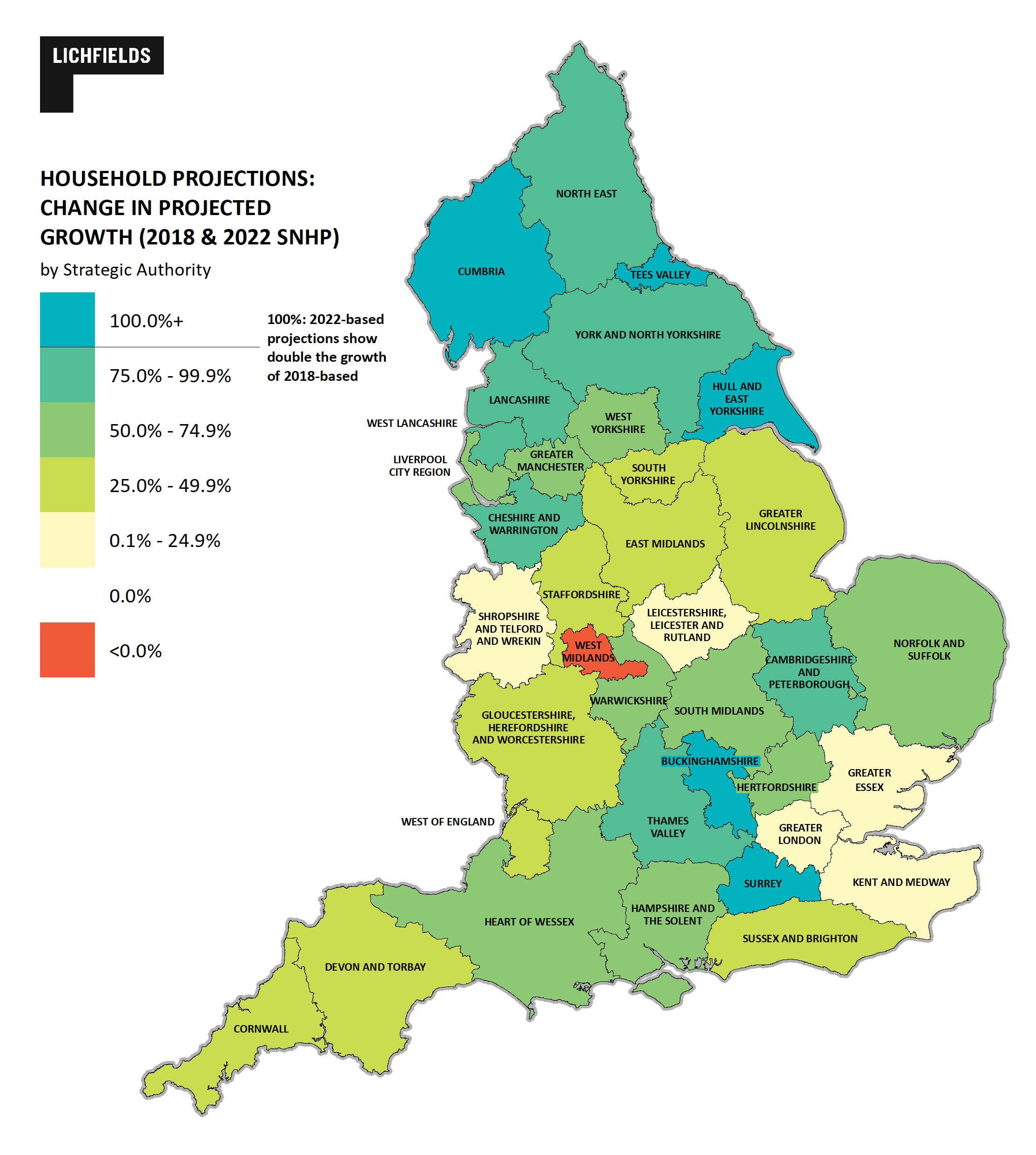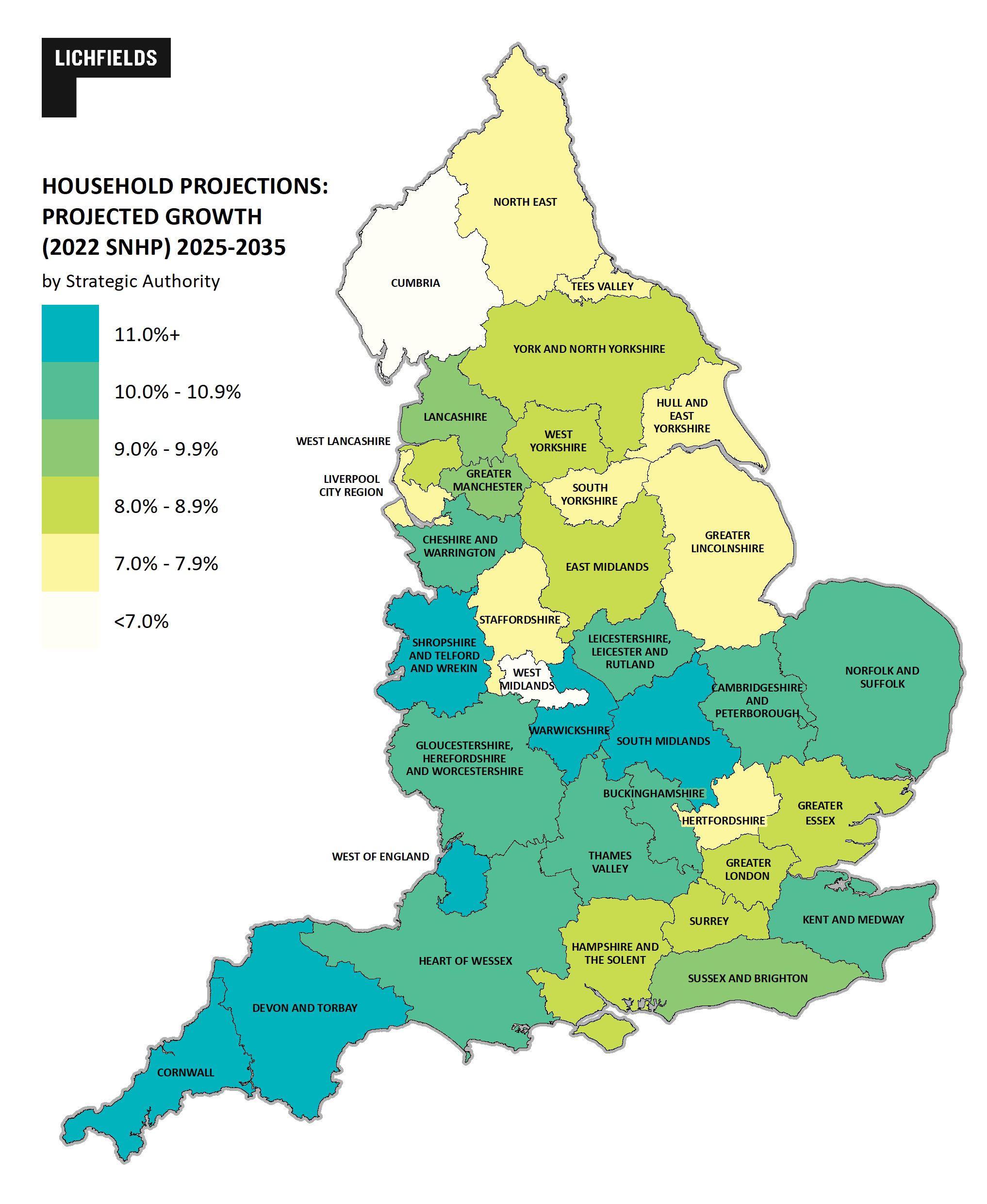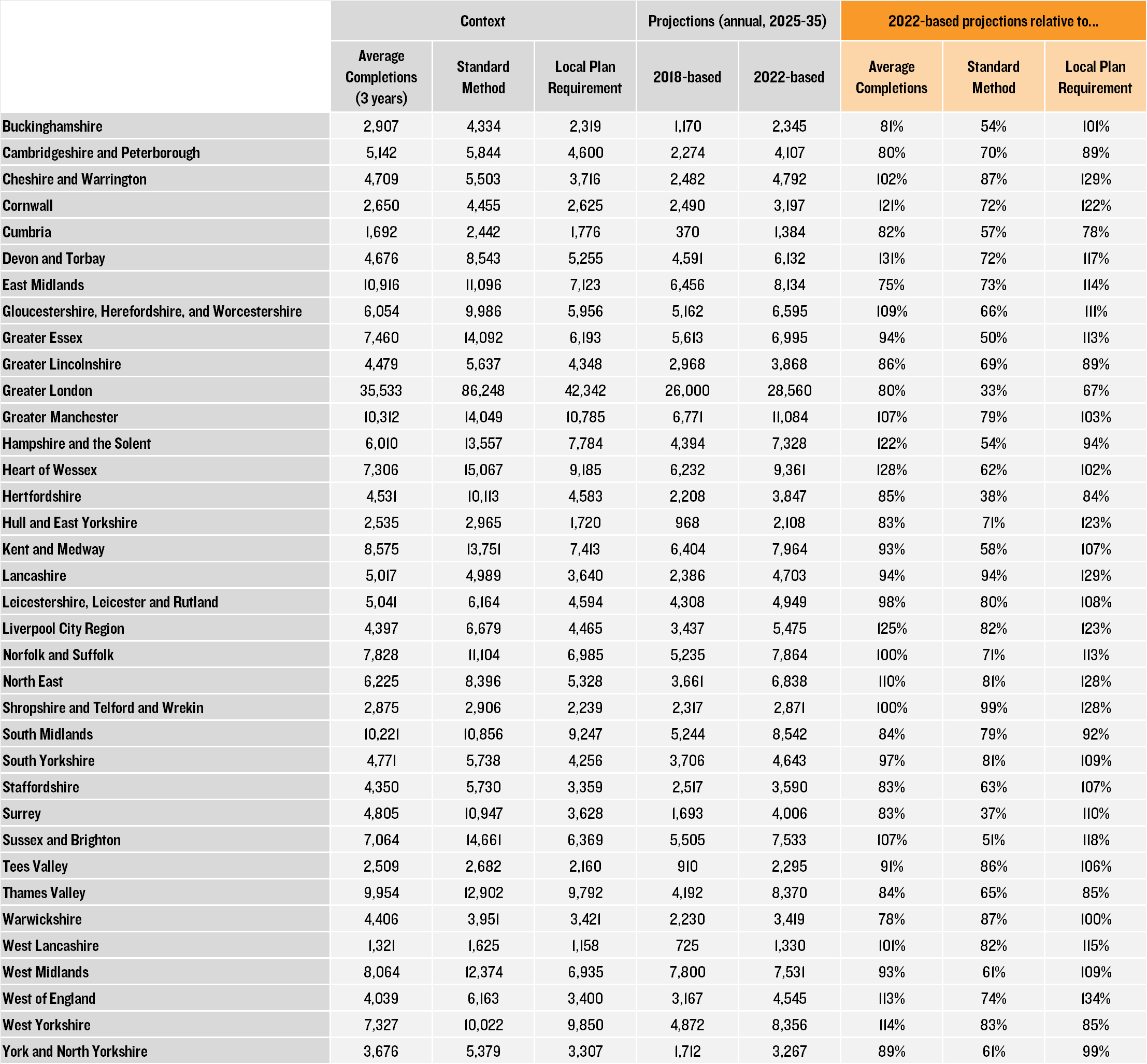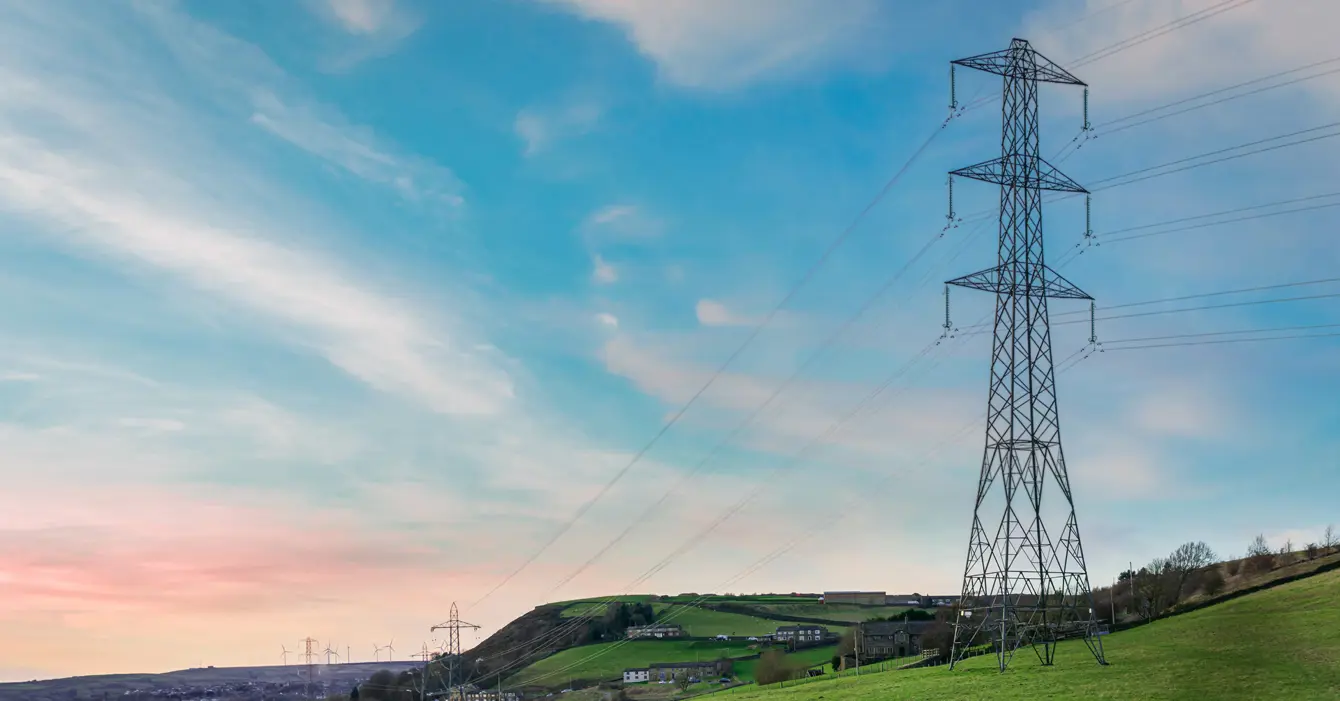Update 27th November 2025:
The Government is running a two part consultation on:
- the design and administration of a proposed time-limited or ‘emergency’ relief from Borough Community Infrastructure Levy (CIL) for certain developments in Greater London, which deliver a minimum level of affordable housing; and
- extending the London Mayor’s development management call-in powers by adding applications for development of over 1,000 sqm within Green Belt or Metropolitan Open Land to applications of potential strategic importance (PSI) and creating a new application of potential strategic importance category, for development of 50 or more homes where boroughs are minded to refuse.
These would be legislative changes.
Simultaneously, the Mayor of London is consulting on draft ‘Support for Housebuilding’ London Plan Guidance, which proposes to comprise:
- time-limited changes to cycle parking requirements
- withdrawal of some housing design guidance
- a ‘time-limited planning route’ for the delivery of affordable housing
These would be policy changes.
Both consultations close on 22 January 2026.
______________________________________________________
In recognition of London’s acute housing delivery challenges, MHCLG has today released a Written Ministerial Statement
and Policy Note
aiming to reinvigorate stagnating housing and affordable housing development in the Capital. The Statement and Policy Note propose a package – much trailed in the media in recent weeks - of targeted measures focused on London Plan policy and guidance covering affordable housing, viability and design, as well as CIL. They also contain powers for the Mayor to recover non-strategic applications above 50 units and proposals in the Green Belt and on Metropolitan Open Land. The aim: to revive the housing sector, unlock affordable housing delivery and get London building homes again.
So, why has the Government acted, what is it proposing, and will it have the desired effect?
Background
Most will be familiar with the perfect storm of economic headwinds and regulatory challenges facing the capital’s housing sector, which have in combination led to unprecedented low levels of delivery. The Ministerial Statement and Policy Note come in the context of multiple challenges associated with construction cost inflation; the uncertainty and costs surrounding well-intended but opaque fire regulations; high interest rates; and multi-layered rafts of complex and often-competing policy. The combined effect of these challenges is a subdued housing sector and near-paralysis in affordable housing delivery. The problems have been clear for some time: Back in 2023, City Hall and London Councils had co-convened the London Housing Delivery Task force and the Conservative Government had commissioned the London Plan Review
in the face of concerns that its targets would not be met.
In the face of this inauspicious backdrop, the Government has nevertheless pledged to deliver the most significant expansion of affordable housebuilding in a generation as part of its commitment to “get Britain building”. Its national ambition is to deliver 1.5 million new homes in five years, and there is no path to this goal that does not pass through London. Likewise, since re-election in 2024, the Mayor of London has pledged to deliver 40,000 new council homes by the end of the decade, double the previous target.
15 months on from the General Election, political ambition and the commercial realities remain poles apart. Recent figures from Molior make the scale of the problem clear, indicating that just 15-20,000 new private homes (on schemes of 20+ homes) will be actively under construction in London by January 2027, compared with 60-65,000 homes under construction at any given time between 2015 and 2020.
London is now on track for fewer than 5,000 private construction starts in 2025. More than a third of boroughs recorded no housing starts at all in Q1 of 2025.
Unsurprisingly, in light of these subdued private housing starts and market headwinds, there is chronic under delivery of affordable housing in all 32 boroughs. According to the latest GLA figures, affordable housing starts in the capital have plummeted by 84% since their 2022 peak – falling from 25,658 (April 2022-March 2023) to just 3,991 (April 2024-March 2025).
The GLA has previously attempted to intervene in the capital’s housing delivery, including through its December 2024 Practice Note
. It had introduced some flexibility to the affordable housing threshold where schemes committed to increased proportions of social rent (27% was provided indicatively). However, it received little fanfare and had no noticeable practical effect. We have seen greater pragmatism and flexibility in the application of policy within the GLA and some LPAs but this is not universal and therefore difficult platform for investing in bringing forward schemes. It has been clear for some time, though, that much more needs to be done.
A Government intervention of some sort was inescapable, and the political party alignment of Mayor and Whitehall meant this would necessarily embrace the GLA going further than it had before, bringing us to the package of more radical measures on which the Government and the GLA will be consulting for six weeks from November 2025.
So, what sits within the package?
1. Viability Threshold – A new Time-Limited Planning Route
A core component of the new package of support is the introduction of a new ‘time-limited planning route’ that allows schemes on private land to proceed without a viability assessment, provided they deliver at least 20 per cent affordable housing, with at least 60% for social rent and the remainder intermediate tenures. Grant funding will be available to homes by unit above the first 10 per cent homes on a scheme. A gain-share mechanism will be in place to increase affordable housing delivery on sites where construction continues into the next decade, where market conditions improve. There is no change proposed to the 60:40 split in favour of Boroughs which might continue to make the late stage reviews a barrier to investment in many schemes.
The route is a temporary measure open to planning permissions granted by 31 March 2028 or until the publication of the revised London Plan. It will sit alongside the existing Fast Track Route, for which the affordable housing threshold is 35 per cent, and the Viability Tested Route.
The new route is available to conventional C3 housing schemes, including Build to Rent, but does not apply to alternative ‘living sector’ products like PBSA and co-living – or schemes where they are the main uses. A lowered 35% threshold will apply to public land and industrial land where capacity is lost.
The Ministerial Statement notes too that Government intends to clarify the use of Section 73 applications so they can no longer be used to reconsider a scheme’s viability or planning obligations, which will be done through an update to Planning Practice Guidance ‘in due course’ and through national decision making policies, which are due to be consulted on by the end of the year.
If eligible housing schemes progress to completion of their first floor level by the end of March 2030, the requirements for a late stage review will be waived. For larger housing schemes 200 units must have been built by that date, unless it is demonstrated that the delay was caused by the Building Safety Regulator. The policy note sets out the late stage review process for schemes that do not meet those deadlines.
2. Temporary Relief from Borough CIL
One of the more radical aspects of the measures is the proposed temporary CIL relief in attempt to redirect money that would have gone into CIL payments towards affordable housing via s106 agreements, which might otherwise have been negotiated down. The intention is that qualifying brownfield schemes (other than grey or Green Belt) achieving 20% affordable housing could benefit from targeted relief from borough CIL (note, not Mayoral CIL), which would only be applied at 50%. Additional relief appears to be available for schemes committing to higher levels of affordable housing.
3. Design and Layout Requirements
The Government will also be consulting on the withdrawal of elements of London Plan Guidance that can constrain the density of housing developments. Guidance will be revised (or withdrawn) to allow for greater flexibility in three key areas:
- Dual aspect units: proposed withdrawal of relevant sections of the Housing Design Standards LPG and provision of updated guidance in relation to discretion in application of London Plan Policy D6, to afford developers flexibility in how they approach the design and mix of single and dual aspect dwellings in order to optimise sites and layouts.
- Dwellings per core: proposed withdrawal of relevant sections of the Housing Design Standards LPG to remove restrictive current guidance on the requirement for no more than eight dwellings allowed per stair core so that boroughs can consider designs which allow for additional quantum.
- Cycle Storage: reduced requirements for cycle parking at residential developments and more flexibility in how storage is provided, for example through off-site provision.
The note makes welcome reference to the significant policy layering in London. Saying that the Mayor “is clear” that in the next London Plan “there should be a streamlining of requirements on developers and a reduction in the layering of policy across the London Plan and borough-level local plans” – reflecting the approach in the anticipated national decision making policies.
4. Changes to the Mayor’s Planning Powers
The measures then include proposals to extend the Mayor’s planning powers to enable Mayoral intervention on smaller housing schemes and developments on the Green Belt and MOL.
The 2008 Mayor of London Order requires boroughs to refer to the Mayor any planning application for development of strategic importance - principally defined in terms of quantum (150+ units) and height (30+m above ground). The Mayor’s powers allow him to direct refusal of these strategic applications or, for application for large scale development or major infrastructure, to direct that the Mayor is to act as the LPA.
The proposed changes to the Order are two-fold:
-
Boroughs must refer applications of 50 or more homes to the Mayor, where they are minded to refuse them.
-
The Mayor will be able to call-in (act as LPA) for proposals relating to buildings of more than 1000sqm on Green Belt or Metropolitan Open Land.
It is anticipated that this referral of additional schemes would be a more streamlined process which would sit alongside the existing referrals.
This change could allow the Mayor to intervene and exert influence on a much higher proportion of applications for housing in London. For example, in the year to date, 44 planning applications for schemes exceeding 150 homes were submitted to London’s LPAs and referred to the Mayor. In the same period, 74 applications were submitted for schemes with more than 50 dwellings, so 30 more applications would have been referrable to the Mayor in the last year
. However, the Mayor still only intervenes in a very small proportion of applications, and it remains to be seen whether alongside these expanded powers the Mayor would become more interventionist.
5. City Hall Developer Investment Fund
The final component of the measures is confirmation of a £322 million of grant funding to establish a new City Hall Developer Investment Fund, intended to enable the Mayor to take a more direct role in unlocking homes, including through targeted investment. The Government and the Mayor will also work together to develop proposals for the potential New Town locations identified in London.
Will it have the desired effect?
The Government’s intervention in the London housing sector through this Ministerial Statement and Policy Note is welcome and not a day too soon. Our project experience and engagement with those across the sector mirrors London's housing and affordable housing statistics, which show a precipitous decline in planning applications for new homes and a sustained period of subdued housing delivery.
Developing conventional housing in large parts of the capital has become impossibly constrained. The London Plan’s threshold approach to affordable housing is not fit for purpose at 35% in the current market and the resultant late stage review imposed on viability tested schemes is widely regarded as making schemes uninvestable. A mechanistic application of policies covering dual aspect units, units per core and cycle storage is also unreasonably inhibiting otherwise acceptable housing schemes. Borough CIL is an additional cost which could be used in challenging markets to unlock development. These have become longstanding challenges and the MHCLG intervention is well overdue.
Of course, the Government could have gone further. It could perhaps have promoted a lower affordable housing threshold than 20% which remains challenging to achieve in many parts of the Capital – many schemes are still only viable at less than the threshold. A more nuanced approach to the threshold approach could have been explored in which developers offered more affordable homes than is strictly viable within viability-tested schemes (accepting a compressed margin) to enable the inherently problematic late stage review to be waived and funding uncertainties circumvented. The interventions could also have been expanded further to facilitate other forms of housing and living sector products which contribute to London’s diversifying housing stock and to housing need. We and our clients who bring forward residential accommodation have many thoughts on the permutations of these and other measures which could be further considered by MHCLG through the consultation.
There is clearly a balance to be struck in how one best unlocks housing delivery and securing reasonable and proportionate public benefits from development. The measures proposed by Government are meaningful and collectively they might be more than might have been anticipated when speculation began in the summer. We can say they will undoubtedly have some positive and immediate effects. The extent and speed of change is, of course, reliant on how quickly they are formally adopted after the consultation and then the response of London’s LPAs: it will be incumbent on the boroughs to embrace the measures in the Ministerial Statement and Policy Note, and to apply them positively in their decision making. Consideration will also need to be given to how these proposed short term measures are reflected in the current review of the London Plan, the first draft of which is due to be published next year, when hopefully the market will already be feeling the positive effects of today’s proposed changes.
The elephant in the room is clearly the challenge of demand and the fact that a factor undermining viability of many schemes is the challenge of selling units in the market since the end of Help to Buy and with no alternative Government support for first time buyers. Absent that demand-side support, it must remain doubtful that the Government’s proposals are sufficient to bring housing delivery back to previous levels, let alone the more ambitious targets for which the next London Plan must aim.
The next step is a 6 week consultation, from November. It is not clear what form this will take or how detailed it will be, but in the meantime, the Policy Note and Statement act as a soft launch of the proposals and a precursor to an imminent formal consultation process. They are also material considerations from now. This means that there could be further changes to the proposals following the consultation and should not yet be treated as in their final form or formally adopted. The changes will need to be enacted in secondary legislation, but we envisage will begin to be discussed in pre-applications, submissions and determinations, given the clear direction of travel.
We can and should be positive about the measures proposed by MHCLG. They are a tentatively promising basis for new housing development opportunities to emerge in the capital, and for stalled schemes with permission to be revisited through fresh or amended applications to unlock their viability. The consultation provides a mechanism for Government to listen to sector views on how they can go further and, ultimately, achieve the essential reversal in the downward trend of market and affordable housing delivery in the capital.
[1] Written Material Statement
[2] Homes for London: Policy Note
[3] London Plan Review
[4] Residential Development in London Q3 2025, Molior
[5] GLA figures available here
[6] GLA Planning and Housing Practice Note December 2024
[7] Source: Landstack
